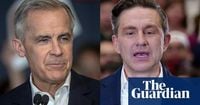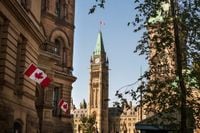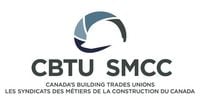As Canadians prepare to head to the polls on April 28, 2025, the political landscape has shifted dramatically, with the Liberal Party under new leadership and the Conservative Party facing unexpected challenges. The election, which will determine who will form the next government, has become a focal point for discussions around economic security, sovereignty, and the pressing concerns of the electorate.
Mark Carney, the newly appointed Prime Minister and former governor of the Bank of Canada and the Bank of England, has taken the reins of the Liberal Party after Justin Trudeau announced his resignation in early January. Trudeau's departure came after nearly a decade in office, during which he faced mounting pressure from within his party and the public due to his declining popularity and internal party conflicts. The resignation was also influenced by rising anxieties over Donald Trump's aggressive economic posturing, including threats of tariffs and even the suggestion of annexing Canada as the 51st U.S. state.
Carney, who has no prior political experience, was sworn in just days before calling a snap election, a bold move aimed at capitalizing on the shifting political mood in Canada. His decision was driven by the need to secure a seat in the House of Commons, as he faced the risk of becoming a target for opposition parties without a parliamentary base. This election marks a critical moment for Carney as he navigates the complexities of leading a government while addressing the economic challenges posed by Trump's administration.
On the other side of the political spectrum, Conservative leader Pierre Poilievre has been a formidable opponent, rallying support with promises to cut regulations and reduce government involvement in housing development. His populist approach has resonated with many Canadians who feel overlooked by traditional political elites. Poilievre's campaign has emphasized a tough-on-crime stance, which he acknowledges may conflict with the country's charter of rights and freedoms, yet he insists on utilizing constitutional mechanisms to implement his policies.
As the election date approaches, the dynamics between the two main candidates have become increasingly pronounced. Polls indicate that while the Conservatives enjoyed a significant lead earlier in the year, recent data shows a dramatic shift, with the Liberals now leading in several key areas. According to polling firms, the Conservatives' once-dominant position has eroded, and they now face a challenging path to victory.
Voter sentiment is heavily influenced by broader concerns over Canada’s economic security and the cost of living crisis, which has left many Canadians feeling financially strained. Both Carney and Poilievre have acknowledged these issues, but they propose markedly different solutions. Carney advocates for a more active government role in addressing housing affordability and infrastructure investment, while Poilievre calls for deregulation and a reduction in government size.
In addition to the major parties, smaller political factions such as the New Democratic Party (NDP), the Bloc Québécois, and the Green Party are struggling to maintain relevance in a race largely dominated by Liberal and Conservative narratives. The NDP, in particular, faces challenges in articulating its platform in a way that resonates with voters amid the heightened focus on the two leading parties.
As Canadians prepare to cast their ballots, the election is poised to be a pivotal moment in the country’s political history. With early voting set to begin soon, the stakes are high for both Carney and Poilievre, as they seek to secure the support of a populace increasingly concerned about their economic future and national sovereignty.
In a related survey conducted by Canada's Building Trades Unions (CBTU), pressing concerns among skilled tradespeople have been highlighted as the federal election approaches. The survey, which polled 500 Canadian Red Seal tradespeople, revealed that issues such as the cost of living, wages not keeping pace with inflation, and job security are paramount for workers in the skilled trades. A significant 87% of respondents expressed support for lowering taxes to allow workers to retain more of their earnings, while 85% favored raising wages to ensure competitive pay in their local areas.
Furthermore, the survey indicated that 87% of tradespeople support investing in domestic infrastructure to enhance Canada’s self-sufficiency, and 81% back investments in export infrastructure to access new markets for natural resources. These findings underscore the urgent need for policies that promote well-paid, unionized jobs within the construction sector, reflecting the broader economic concerns shared by many Canadians.
Among the tradespeople surveyed, 83% agreed that companies awarded government-funded projects should be required to pay wages and benefits on par with union standards. Additionally, over 62% were aware of the Labour Mobility Tax Deduction, with 23% reporting they had utilized it, highlighting a demand for greater accessibility and expansion of this financial support.
As the election nears, the CBTU emphasizes the importance of prioritizing policies that uplift skilled trades workers and protect high-quality union jobs. The organization, which represents 600,000 skilled trades workers across Canada, is calling on all political candidates to focus on the issues that matter most to their members and the broader workforce.
With the election just days away, Canadians are faced with crucial decisions that will shape the future of their country. The outcomes will not only determine the next government but also set the course for addressing the pressing economic challenges that have become central to the national conversation. As voters prepare to make their voices heard, the implications of their choices will resonate far beyond the ballot box.







